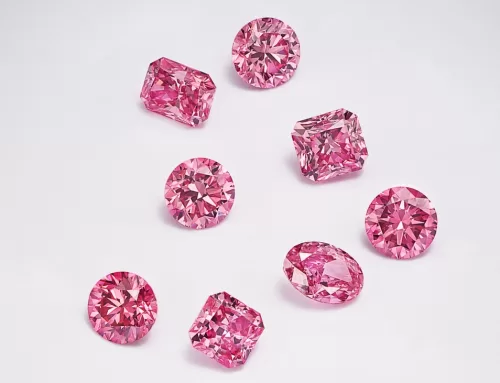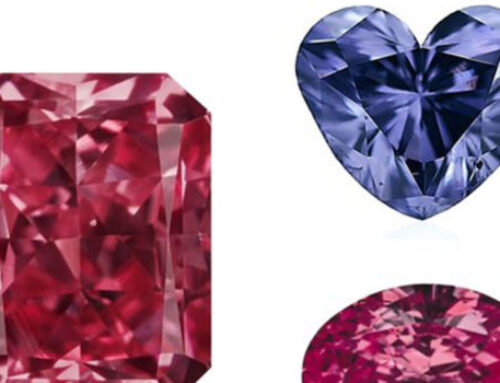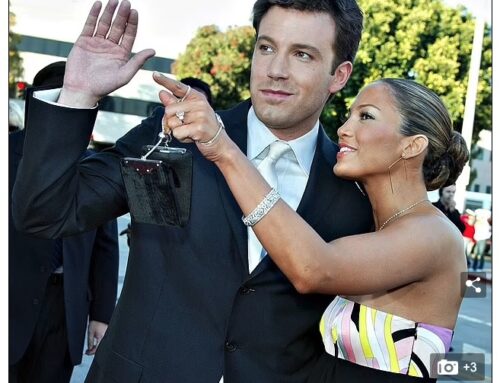The last of the Argyle Pink Diamonds?
Argyle Pink Diamonds are among the rarest and most valuable gems on earth – but the mine that produces them is closing next year. Vivienne Becker asks what their future hold
Via Howtospendit.com / Images Rio Tinto / by Vivienne Becker
It was a hint of a glint on an anthill in remote Western Australia in the late 1970s that led to the discovery of the vast Argyle diamond mine, and the extraordinary candy-pink diamonds that are among the rarest, most valuable gemstones on earth – avidly sought after as treasured possessions and high-performing assets. Now, after some 36 years in operation, supplies of Argyle diamonds are depleted, and the Rio Tinto-owned mine, one of the biggest, most productive diamond sources in history, will reach “end of life” next year.
This, however, is not where the story ends. More likely, it is the beginning of a new one: the tale of a robust secondary market, as Argyle Pink Diamonds (APD) establish their open-market value and investment potential as a finite, unrepeatable natural resource and achieve the status of outstanding heritage stones. After all, their impact has been nothing short of dazzling. The momentous discovery of this entirely new specimen of pink stone is what sparked the modern desire for coloured diamonds – an allure that has since escalated into a jewellery-world phenomenon, underpinned by an enlightened, responsible approach to mining, an innovative, independent mine-to-market strategy and a brilliant branding concept.
Enmeshed as they are in legends surrounding their otherworldly colours and their origins in land that has been sacred to the Aborigines for thousands of years, is it possible that APDs could also achieve a near-mythical quality akin to that of Golconda diamonds from India’s earliest gem mines? Since the mine in the East Kimberley region came on stream in the mid-1980s, doubling the world’s diamond production, it has yielded some 865m carats of stones, only 0.01 per cent of which have been the celebrated Argyle fancy pink diamonds. Yet this was the world’s first and only consistent source of pink diamonds, producing 90 per cent of global supply. Where discoveries in India, Brazil and Africa were (and still are) sporadic and unpredictable, Argyle offered up a stream – well, perhaps a trickle, but a steady one – of stones of scintillating brilliance, in shades of purplish-tinged pink, a hue and saturation never seen before in a diamond. The spectrum extended into sublime violets, blues and reds – the rarest and most valuable of all coloured diamonds, almost unheard of before Argyle but now the pinnacle of gemstone connoisseurship.
Although a large white diamond was discovered there earlier this year, the bulk of Argyle production comprises brown gems, in hues from golden beige through saffron-cinnamon to orange-tinged bronze – stones previously relegated to industrial use. But in a stroke of marketing genius that challenged entrenched industry conventions and public perception, they were repositioned and trademarked as Champagne and Cognac diamonds. Argyle also instigated its own grading system. “There was an obvious connection to high-profile commodities, favoured by wealthy connoisseurs,” says Mike Mitchell, Argyle’s general manager of sales from 1983 to 2003. “We had to re-stitch the mystique of diamonds to include, instead of exclude, coloured ones, to create a new market that did not diminish the importance of white diamonds, but allowed the coloured stones a realm of their own.”

After geologists uncovered rough gems in that anthill in 1979, they realised they were standing on what was to become AK1, the Argyle diamond mine. After some three years of feasibility studies and exploration, the initial joint venture of CRA (later Rio Tinto) and the Ashton Mining consortium began to grasp the significance of their find – and realised they had no experience of diamonds and no market expertise. A deal was struck with De Beers, which controlled the world’s diamond supply, to sell 80 per cent of production through the Central Selling Organisation (De Beers’ sales arm), but in which Argyle kept 20 per cent of output, including some pinks, to sell themselves.
When the contract was renewed, after five years, De Beers was given 78 per cent of volume production, while Argyle retained the remainder to sell on the open market, including all the pink diamonds (De Beers was focused solely on white ones at the time). In 1996, after arduous negotiations, Argyle decided to opt out of the cartel – the first diamond mine to do so – and go it alone, marketing the stones themselves on the open market and becoming masters of their own destiny. “For 60 years, De Beers had emphasised the beauty and value of white diamonds. This was an unexplored market, requiring a new strategy,” Mitchell explains. “We were not prepared to be a passive participant in the diamond industry.”
Argyle went full steam ahead in building the Argyle Pink Diamond brand. By 2000, the company, now owned entirely by Rio Tinto, had developed the sales structure for the rarest of the pinks, through a carefully controlled global network of wholesalers and retailers – in effect, a small pink-diamond ecosystem that includes wholesalers, “Authorised Partners” such as John Glajz in Singapore and Matthew Aldridge in Geneva, and retailers or jewellers – “Select Ateliers”, including John Calleija and David Michael in Australia, Gimel, Japan’s cult designer-jeweller, and Boodles in the UK, who can use the APD brand. Today, there are 14 Authorised Partners across the globe, who buy cut and polished stones directly from Argyle at quarterly sales, and 31 Select Ateliers of APDs.
So enthralled was Boodles that it adopted Argyle’s particular pink as a signature colour and brand signifier, and lavishes its high jewellery with APDs at every opportunity: the luscious pink-diamond knot of its 220th Anniversary necklace (price on request), for example, or the flamingos on the Summer Palace pendant (price on request) in its Wonderland collection. Contemplating the mine’s closure, Boodles director and gemstone buyer Jody Wainwright is “filling my boots, stockpiling whatever is possible”. This is necessary, he adds, as part of the painstaking process of collecting and matching nuances of colour, calibration and size – referring to the small pink diamonds characteristic of the Argyle mine that Boodles, like so many jewellers, works into its creations as highlights, accents or contrast stones. “You need to be patient, especially as their price is so high,” he says. (In most cases, APDs cost 20-25 per cent more than any other pink diamond.)
Australian jewellery designers David and Michael Robinson, who handmake each David Michael piece in their Gold Coast atelier, use APDs in their painterly pavé-work – on an orchid ring (price on request), or depicting cherry blossom growing around patinated hoop earrings (price on request). For David, the “intensity, concentration and purity of the small but potent diamonds draws you in.”
Argyle turned the diamonds’ diminutive size to its advantage: the consistent supply – of both champagne browns and pinks – coincided with the rise of the Indian cutting and polishing industry from the mid-1980s to early ’90s, which in turn helped to make diamonds more accessible and fashionable, in an enchanting new colour palette – and at a time when women were beginning to buy precious jewellery for themselves. Jason Hirsh, co-owner of London jeweller Hirsh, explains: “During the ’90s, my father visited and sourced diamonds from the Argyle mine when the only pink ones on the retail market were very large and extremely expensive. We introduced smaller, natural pink diamonds to the UK market, which made them more accessible.” Today, Hirsh’s graphic Ice ring (£23,000) features a central orange-pink 0.32ct Argyle diamond and four corner pink diamonds, while the Infinity ring (price on request) centres on a radiant-cut deep‑purple pink 0.58ct Argyle diamond.
The finest, largest and most colour-rich stones of each year’s production – the intense or vivid pinks (as well as the even rarer reds, violets and blues) that constitute only 1 per cent of all polished pink diamond production – have always been offered in an annual sealed-bid Tender to a group of some 150 invitation-only buyers, selected from across the industry. They include retailers such as Tiffany & Co or Chow Tai Fook in Hong Kong; diamantaires Messika and Moussaieff; and collectors, investment portfolio managers and funds such as Sciens Coloured Diamond Fund, for whom Argyle stones are key. Since 2000, these Tender stones have appreciated in price by 500 per cent, says Arnaud Soirat, CEO of Rio Tinto Copper & Diamonds, by far outperforming equity markets. Prospective buyers vie to acquire the “hero” stones of each Tender – the most extraordinary specimens, including the individually named reds and violets. It is estimated that only 150 Tender stones remain at the mine.
This year, the Tender was launched in July at the mine itself, highlighting the gems’ provenance and the Argyle story. Representatives of the land’s traditional owners performed their Manthe welcoming ceremony, intended to ensure the wellbeing of all who visit the site, followed by an unveiling after sunrise. The collection of 64 stones includes six heroes: fancy vivid or intense purplish-pinks, including the cushion-shaped Argyle Elysian, the heart-shaped Argyle Amari and – the highlight – two fancy red diamonds: Argyle Avenoir, a 1.07ct oval, and Argyle Enigma, a 1.75ct radiant cut. To put their rarity in context, red diamonds over 1.5ct have accounted for fewer than 1 per cent of all Tender stones, and the average size of Tender stones is just 0.90ct (the largest was 4.15ct, purplish-pink, in 2001). A size of 1ct or greater in a Tender or significant stone adds another layer of rarity, according to Philip Baldwin of Sciens Coloured Diamond Fund.
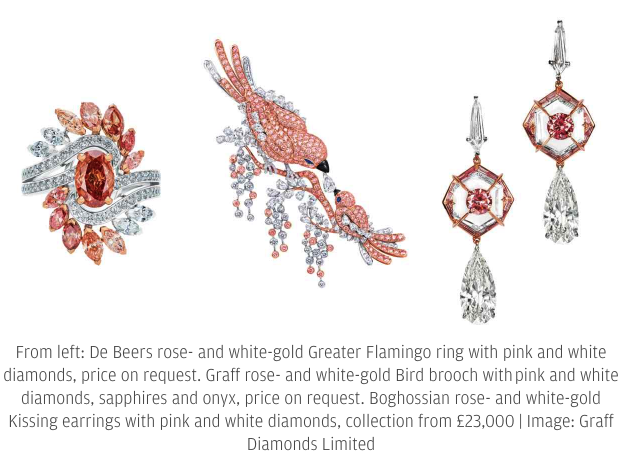
This collection highlights the vital roles played by expert cutting and polishing in APDs’ success. Although the colour of these diamonds remains something of a mystery, it is known that the pink is caused not by the rogue presence of other elements but by a distortion of the crystals’ atomic structure. Due to their formation and complex internal graining, they demand special cutting expertise to preserve or enhance the colour. Argyle decided early on to handle cutting and polishing itself and, over time, its skill has been perfected to such an extent that, of the 32 red diamonds produced in 36 years, 10 of these extreme rarities have appeared in the past seven years.
Laurence Graff was one of the first to spot APDs’ potential. He purchased the entire first Tender in the late ’80s, and with characteristic audacity set them all into a single brooch, sold to the Sultan of Brunei hours after it left the workbench. Graff continues to use them with the same panache: the latest creation is a sculptural “mother and child” Bird brooch (price on request), the birds pavé set with APDs and trailing pink and white diamond blossom.
Geneva-based gem merchant Matthew Aldridge reminisces how, in 1994, he too bought the entire Tender: “That is simply not possible at today’s prices.” In the mid ’90s, a gem 0.1ct APD fetched around $10,000 a carat, he says, but would now make $100,000; and a fine round pink diamond of around 1ct has likewise appreciated tenfold.
But where coloured diamonds were once geeky glass-case specimens, APDs in particular are now considered a prime ingredient of high jewellery. Alisa Moussaieff, whose late husband Shlomo bought coloured diamonds long before they were widely appreciated, searches out superlative-quality pinks to bring a romantic thrill to classic designs such as long chandelier earrings (price on request) set with white diamonds, natural pearls and 3.84ct of APDs. Boghossian’s ingenious Kissing designs (collection from £23,000) showcase pinks to perfection, “embracing” white diamonds; while in New York, Scott West Jewelry’s diamond-adorned Aureole hoop earrings ($36,000) bring a more casual opulence to these cherished gems.
This collection highlights the vital roles played by expert cutting and polishing in APDs’ success. Although the colour of these diamonds remains something of a mystery, it is known that the pink is caused not by the rogue presence of other elements but by a distortion of the crystals’ atomic structure. Due to their formation and complex internal graining, they demand special cutting expertise to preserve or enhance the colour. Argyle decided early on to handle cutting and polishing itself and, over time, its skill has been perfected to such an extent that, of the 32 red diamonds produced in 36 years, 10 of these extreme rarities have appeared in the past seven years.
Laurence Graff was one of the first to spot APDs’ potential. He purchased the entire first Tender in the late ’80s, and with characteristic audacity set them all into a single brooch, sold to the Sultan of Brunei hours after it left the workbench. Graff continues to use them with the same panache: the latest creation is a sculptural “mother and child” Bird brooch (price on request), the birds pavé set with APDs and trailing pink and white diamond blossom.
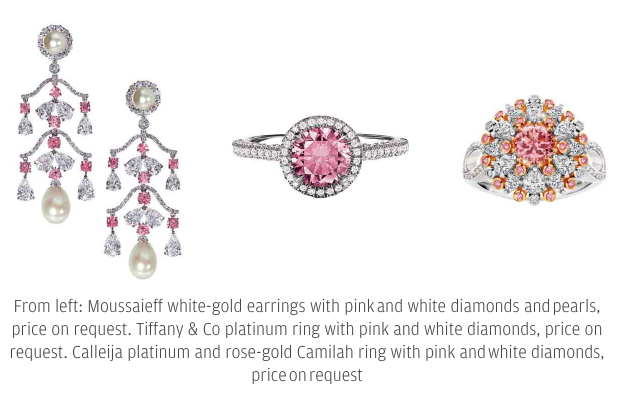
Geneva-based gem merchant Matthew Aldridge reminisces how, in 1994, he too bought the entire Tender: “That is simply not possible at today’s prices.” In the mid ’90s, a gem 0.1ct APD fetched around $10,000 a carat, he says, but would now make $100,000; and a fine round pink diamond of around 1ct has likewise appreciated tenfold.
But where coloured diamonds were once geeky glass-case specimens, APDs in particular are now considered a prime ingredient of high jewellery. Alisa Moussaieff, whose late husband Shlomo bought coloured diamonds long before they were widely appreciated, searches out superlative-quality pinks to bring a romantic thrill to classic designs such as long chandelier earrings (price on request) set with white diamonds, natural pearls and 3.84ct of APDs. Boghossian’s ingenious Kissing designs (collection from £23,000) showcase pinks to perfection, “embracing” white diamonds; while in New York, Scott West Jewelry’s diamond-adorned Aureole hoop earrings ($36,000) bring a more casual opulence to these cherished gems.


